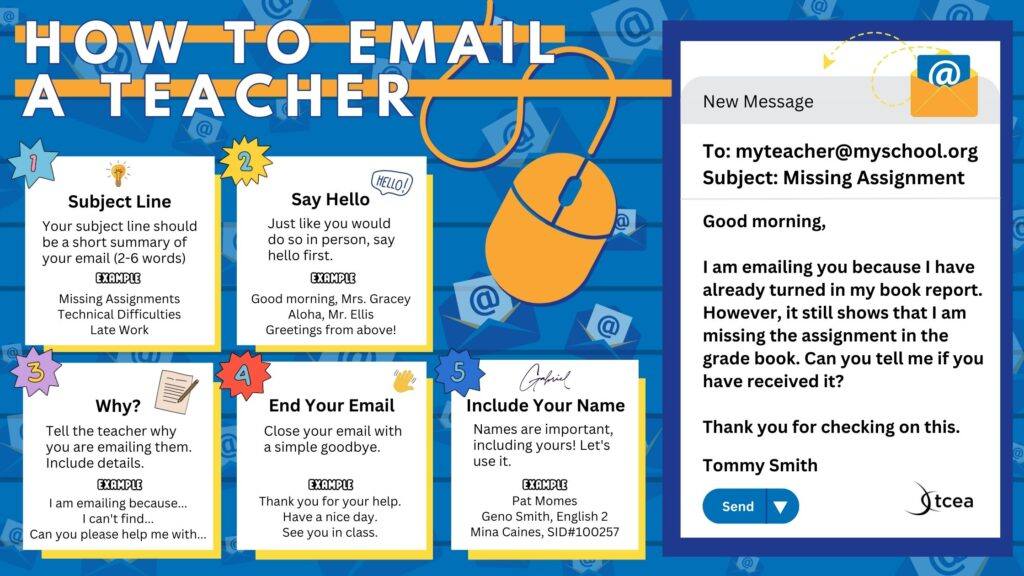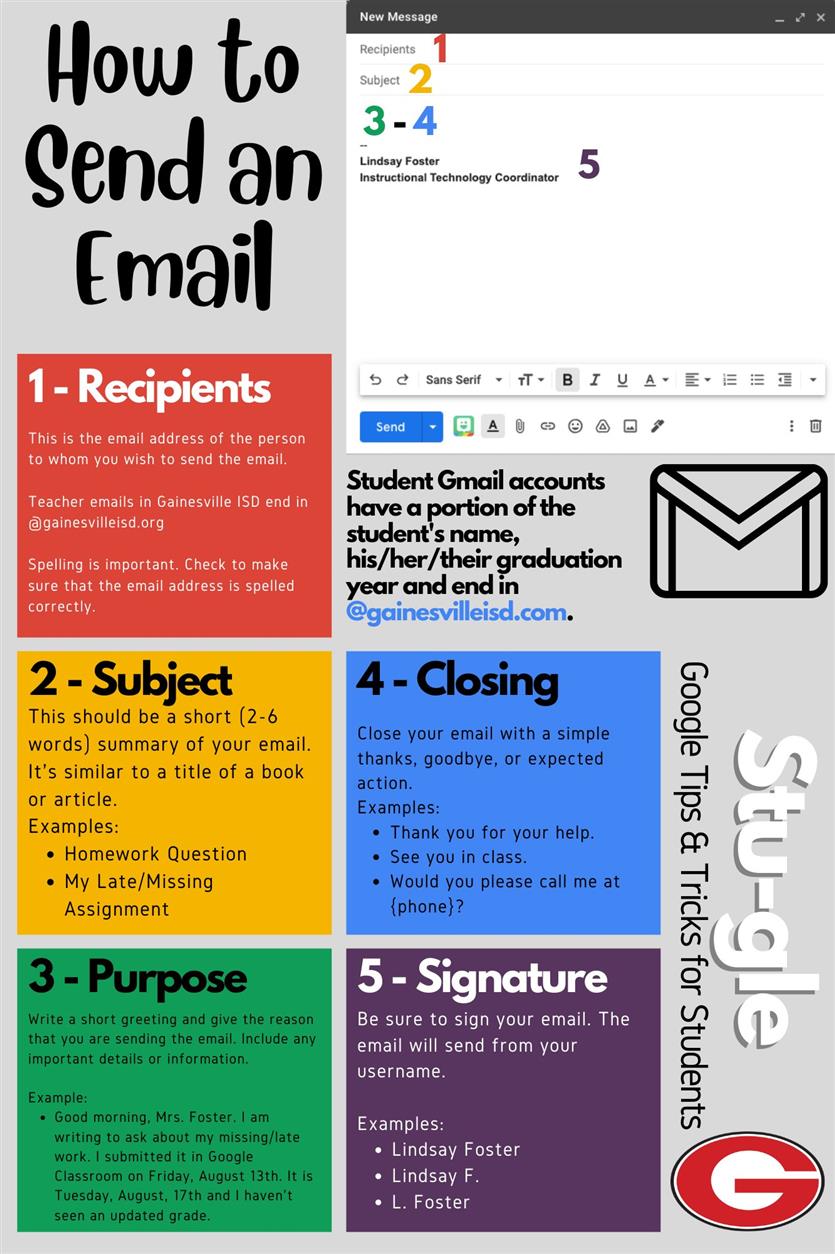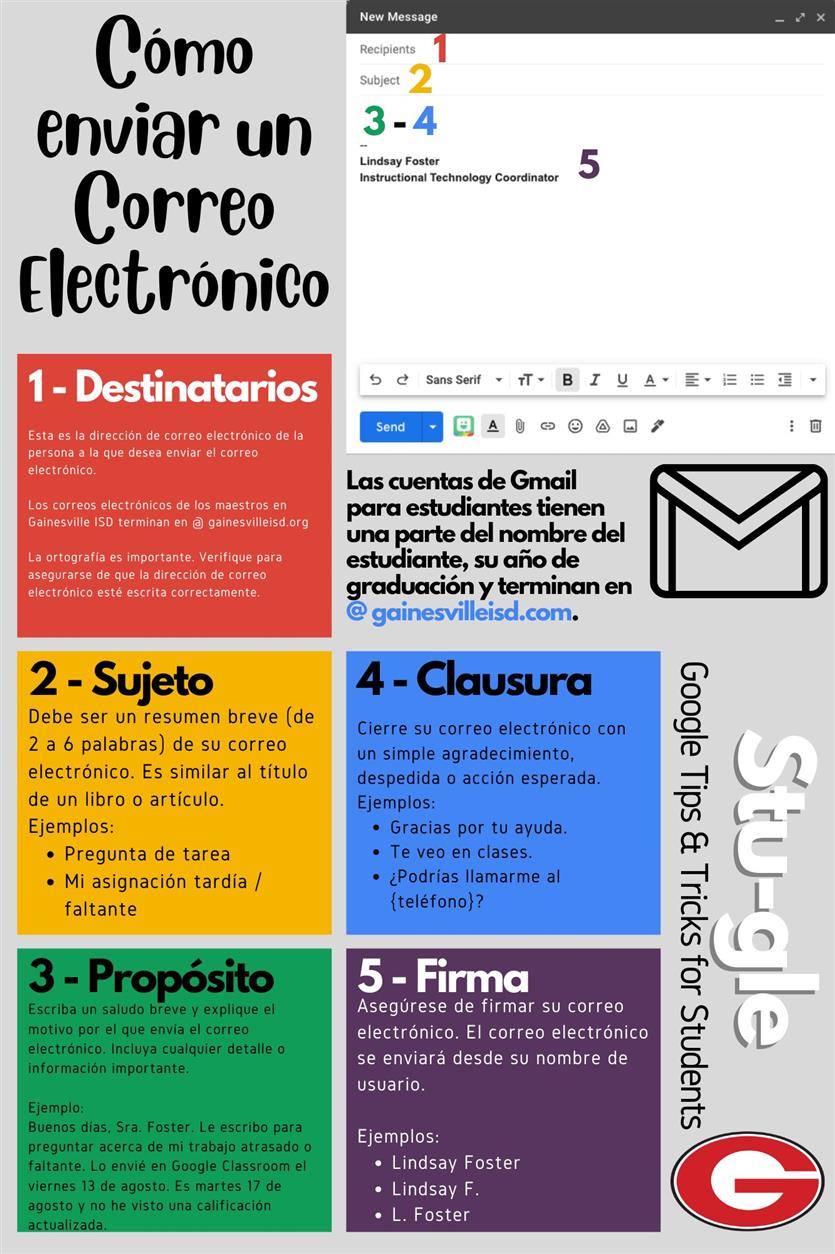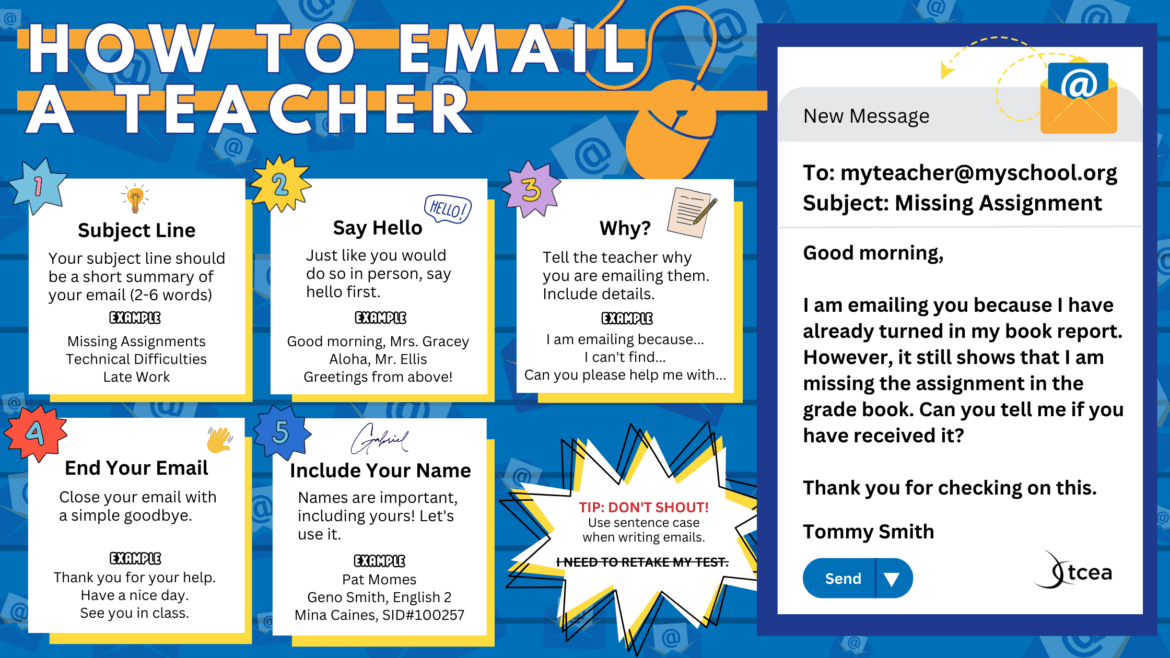Most of us have been using email for a large portion of our lives. So it’s natural to assume that everyone knows how to send a “good” email. But that’s definitely not true, especially for students. Just like any other skill, learning to send a meaningful, accurate, and polite email must be taught. Let’s look at how we as educators can do that.
Age-Appropriate Email Strategies
Depending on the age of the student, the following tips are appropriate (from the article Email Etiquette for Students):
Elementary School:
- Using proper sentence structure
- Spell checking
- Privacy for both the student and the recipient(s)
Middle School:
- Thinking before clicking Send
- What to share and what not to share
- Basic courtesies in email and texting
High School:
- When to email or text and when not to
- Not all communications should be emoji or acronym based
- How to clearly communicate with you mean
College:
- How grammar and approach can leave an impression
- How to use email for employment opportunities
- Portraying a serious intent and professional tone
Start with the Basics of Writing an Email
As a former English teacher, I would begin helping students learn about emails by discussing that writing an email is a different type of writing than, say, writing a text message or a legal document or a joke. There are certain ways that it should be done. Then I would show them this easy-to-understand infographic.

The five steps above, if followed, would result in a polite, informative, email that is a call to action to resolve some problem or question. (Please note that, while this is formulaic writing, something I don’t normally believe in, I do feel that it would work well as an introduction to students on the art of composing an email. Once they’ve mastered it, they can branch off on their own more.)
I would go over this with the students and then pull up several example emails that I had created previously, having the whole class talk through how they could be improved. For each email, I would ask the students, sometimes in pair, sometimes alone, to think through the five steps to see if there were changes in any of them that needed to be made. For me, I would use these as my examples in this order (from simple to more complex):
- An email with no greeting or closing
- An email that doesn’t state the problem or question
- An email that has too long or too short a subject line
Next, ask students what information they think would need to be added to the five steps to help a busy teacher. (Perhaps the class period of the student?) I would then talk about voice in writing and how, since this email is going to their teacher and not a friend, it needs to be grammatically correct. That’s a good time to show them the spell checker and how to use it. This is also a great time to show them how to create their own signature for an email, even several (one for more formal messages and also an informal one for their friends or family).
Finally, I would ask students when sending an email may not be a good idea. I would hope they would come up with when they are angry or when it’s an urgent matter that really needs a face-to-face (or Zoom to Zoom) discussion. They might also say that a student shouldn’t send an email if he/she can just ask the teacher the next day (for something minor).
Putting It into Practice
Before turning your students loose with email, it would be good to have them practice first. Here are two different ways to do that (taken from Classroom Activities: Email).
Class Email
Foster new friendships and help students practice their reading and writing skills. Pair students up in the classroom (or with students in other classrooms) and have them exchange email addresses. Ask one to write a message to the other and start an email change. You may want them to write about a specific topic, such as a response to an issue or a piece of writing, or you may want them to just share what happened that day. Once your students are comfortable with this, they could become e-pen pals with students in another city, state, or country!
Community Leaders
Many government and community leaders, such as the mayor, governor, and even President of the United States, have email addresses that people can write to and share their thoughts. Discuss different issues in the community with your students. What can be changed? What seems unfair? What issues should leaders be working on or improving? Brainstorm different ideas and then have students write emails to their community or government leaders. Remind them that in formal messages, they should refrain from abbreviations and emoticons.
Writing an Email Resources
To help your students learn more about the art of email creation, here are a few good resources:
- Email Etiquette Lesson Plan – a great resource with a Kahoot! game, video, primer quiz, and both guided and independent practice. The lesson plan is designed for grades 6-8, but I would be very comfortable using it for grades 4-12.
- How to Write an Email to Your Teacher (with a nice graphic of both a “good” email and a “bad one)
- How to Write an Email to a Teacher (with Pro Tips) – nice three-minute video for secondary students
- The Best First Writing Lesson of the Year: Email Etiquette 101 – This article lays out why email etiquette is so important and then provides some great ideas for teaching it. (I especially loved the #EmailFail idea, although most of the examples provided are for adults only. Instead, have your students create their own “EmailFail examples.)
- How to Email a Professor (With Samples) – very clear directions in this article
- Email Etiquette for Kids – good lesson with two activities for upper elementary students
- Email Writing: 10 Classroom Activities – good for an introductory unit for secondary students
- 15 Ways to Make Email Practice Fun – lots of innovative ideas here
- Digital Etiquette – This is a four-minute video from BrainPOP that covers digital etiquette in general. It might be a good way to lead into the email lesson.
An Additional Resource
Thanks to Lindsay Foster from Gainsville ISD who created two wonderful infographics to share with GISD students from the information in this blog. One of them is in English and the other is in Spanish. Perhaps you could use these as a starting point for an infographic for your students!


*This blog post was updated with new content on August 19, 2021.



13 comments
Have a good day ms
Really good website to help understand to write an email
Excellent article, I definitely appreciate this website. Thanks!
This post is fantastic for addressing a skill that is easy to assume students have. I used it to inform an infographic we sent to parents supporting at home learners, and they loved it.
I was inspired to create my own district specific graphics – one in English and one in Spanish – to assist students with this type of communication. I then shared the graphics out on our department’s Twitter feed. https://twitter.com/CurriculumGISD/status/1428415973212762113
Fabulous idea, Lindsay. And thanks for sharing!
Thank you for these wonderful resources! Is there a way to get the graphic that states how to email a teacher?
Thanks for the kind words, Millicent. You can download the graphic by right-clicking on it and selecting Save Image.
It is nice idea
Hi
Would it be permissible to use the infographic as a poster in school as well as share on our school website?
Thanks
C
Or course, Christine! Feel free to use this infographic.
the first link is broken and that is what I need
Oh no! I’m sorry that the link is not working for you. Are you trying to access the “Email Etiquette Lesson Plan,” by chance? Unfortunately, it looks like the original source has removed that lesson plan from their site. Our team will keep an eye out for similar resources, but in the meantime, check out some of the other great resources and lesson plans linked in this blog post for inspiration!